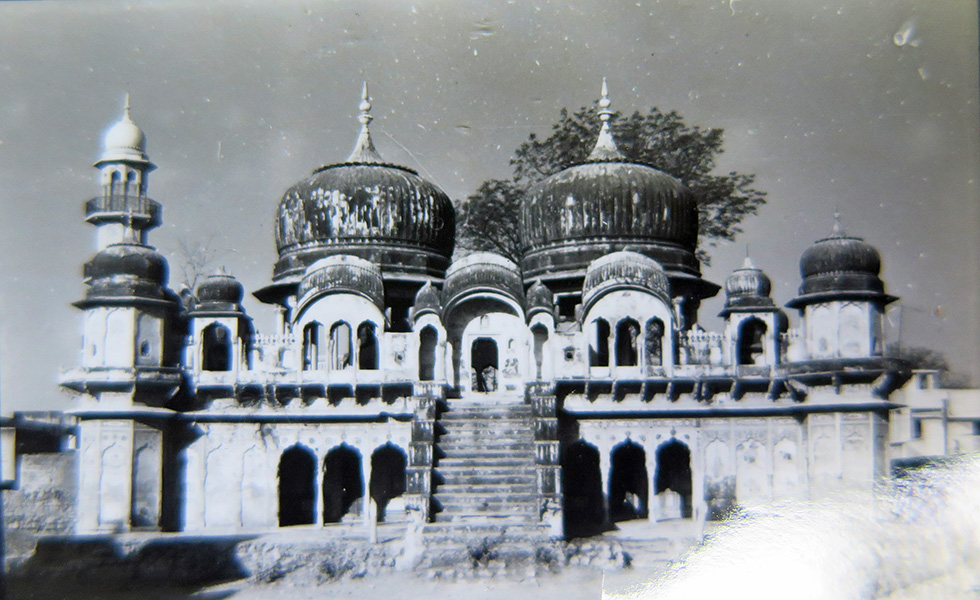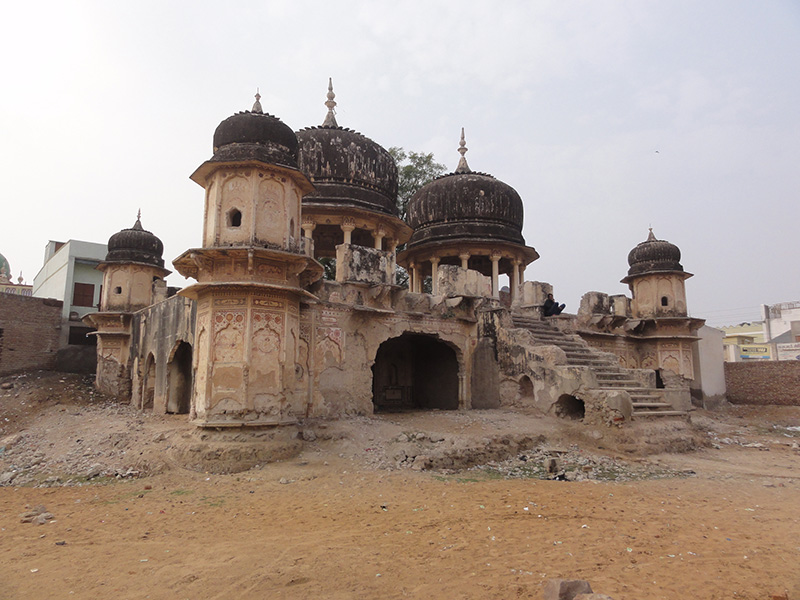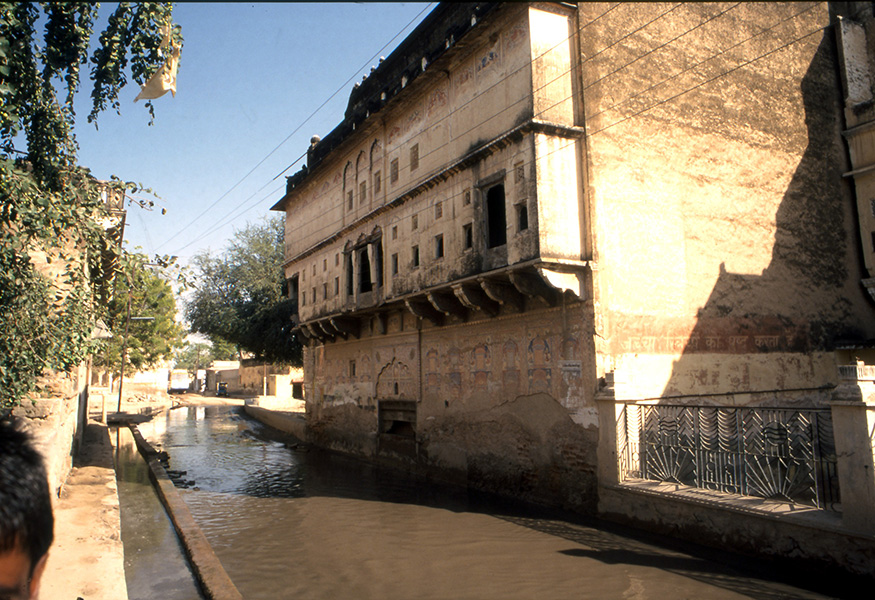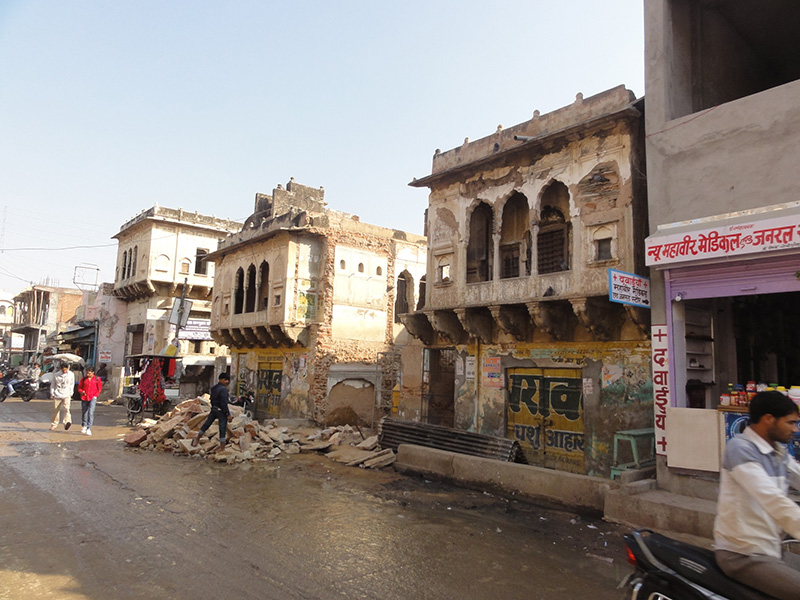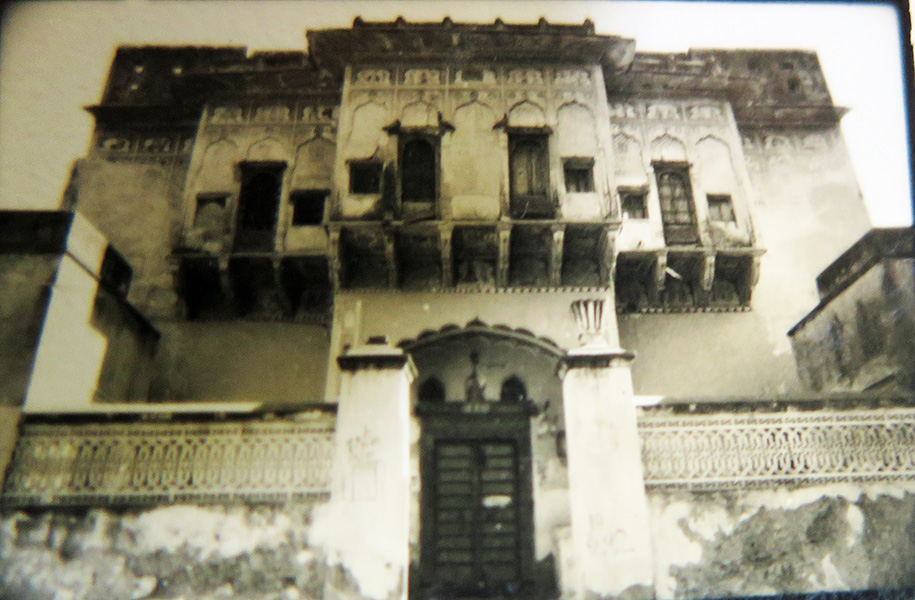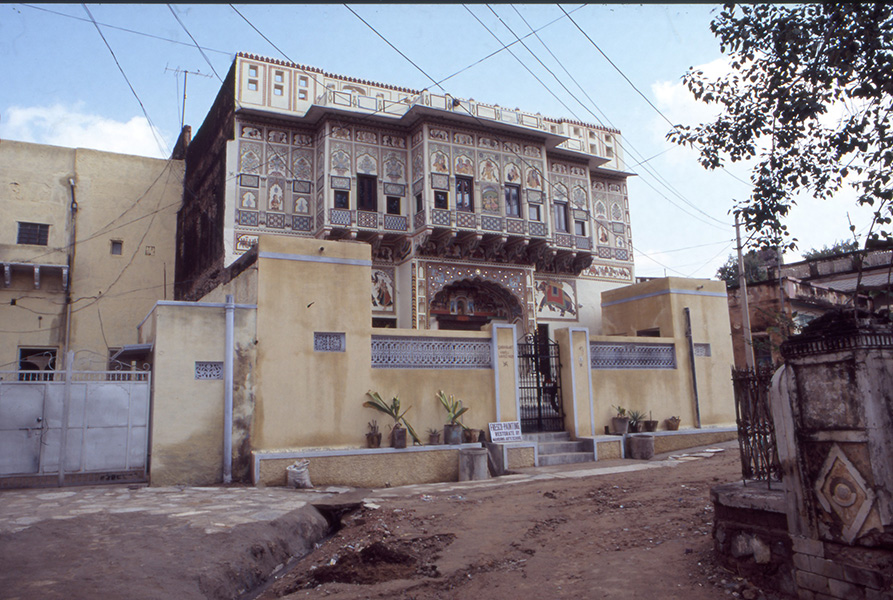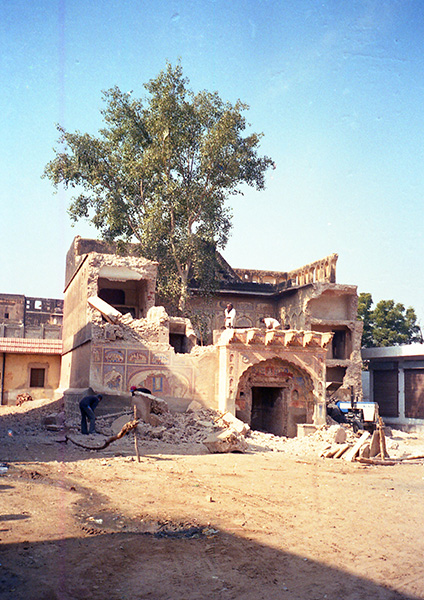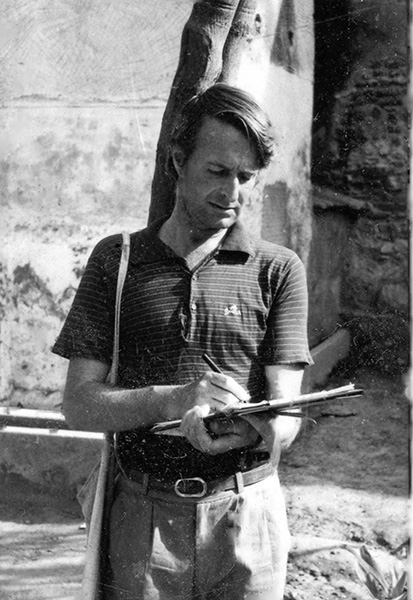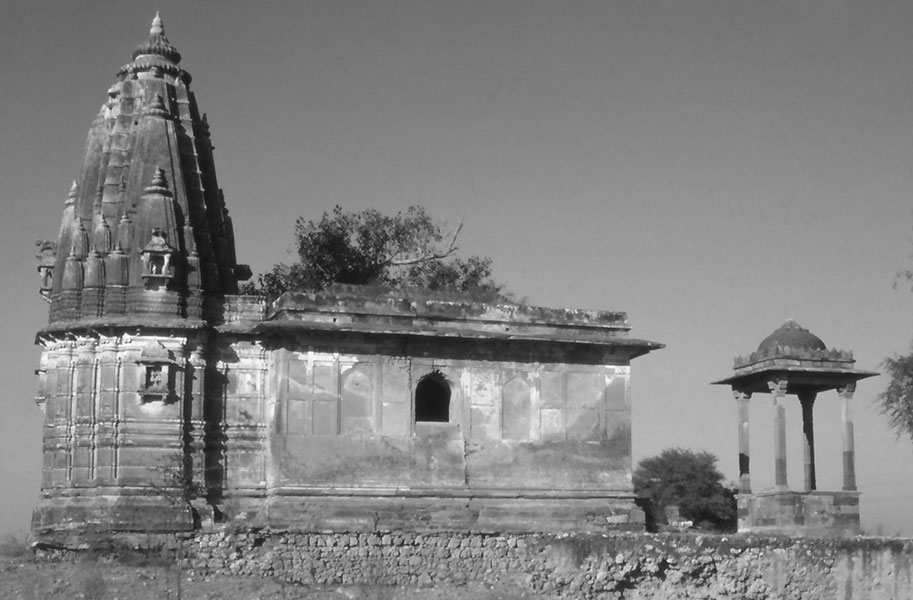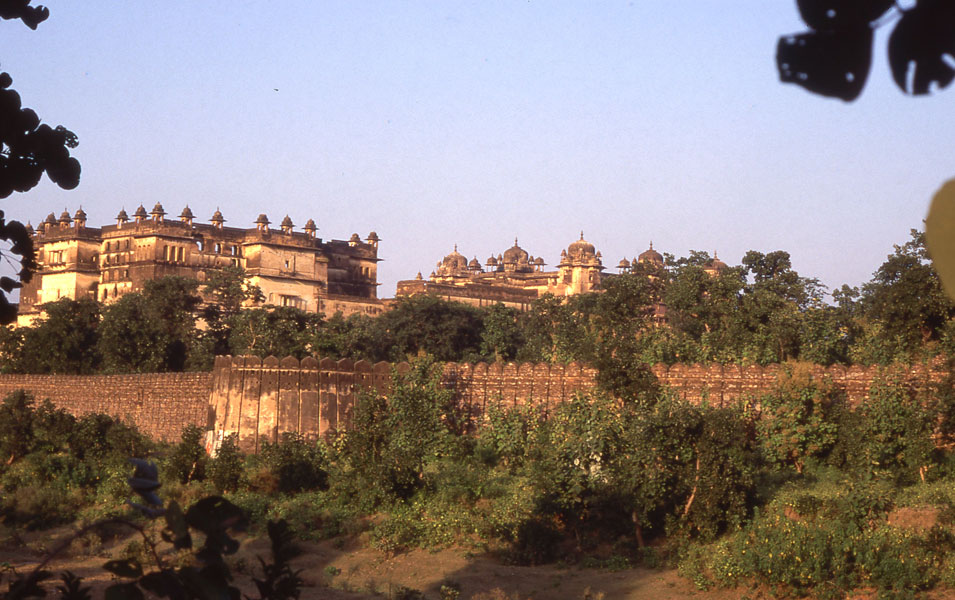70. Shekhawati Updated In My Final Home
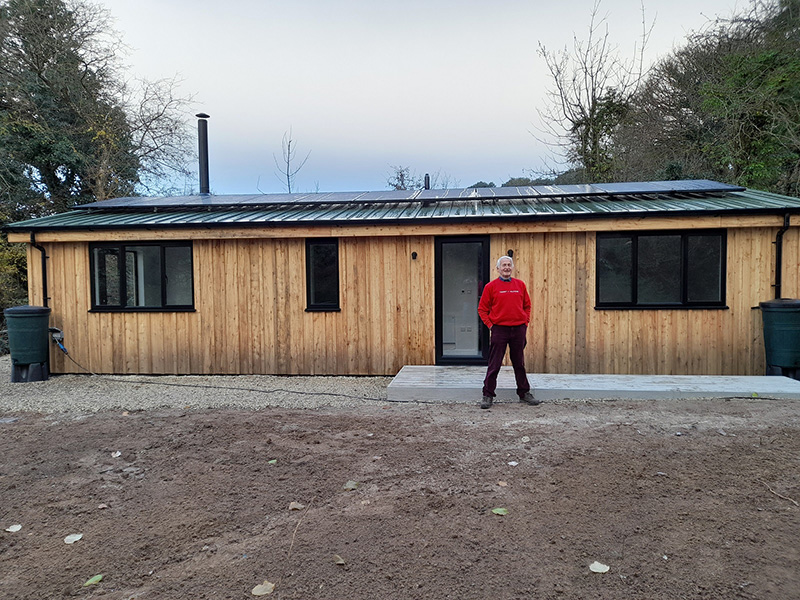
69. A Moving Experience
January 5, 2023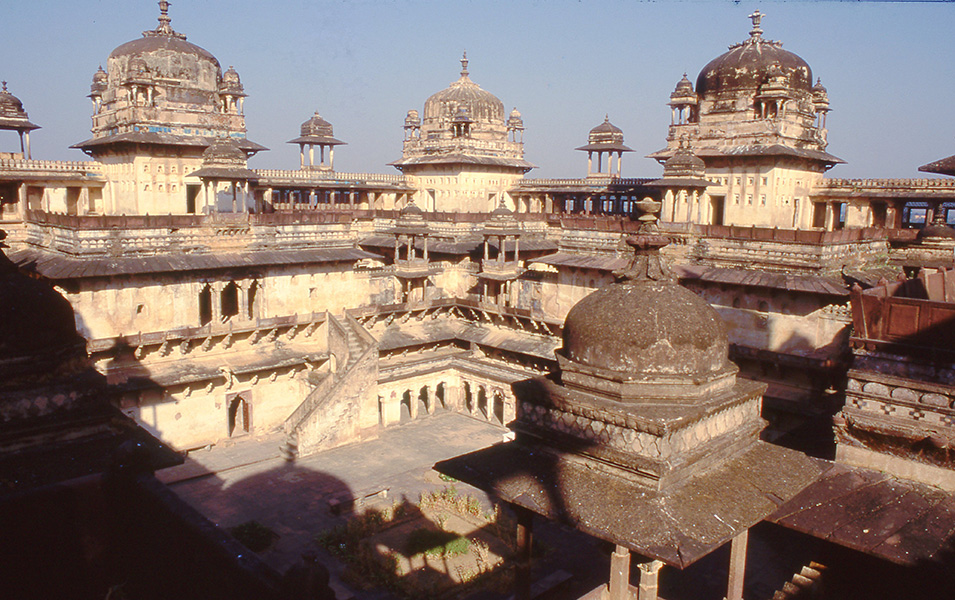
71. Where Was I? Orchha And Onward
March 4, 2023W ell, the ‘final’ stands to reason. I’m nearly eighty, have no claims to immortality. Purbeck has always been home and, for thirty-five years, when not in India, I have been based at Dunshay in a series of secondhand caravans, thanks to Mary Spencer Watson, who welcomed me there. Life in England had already taken that sort of turn since, on retirement, my parents moved away. There was always a search for somewhere to live. Sometimes I passed the summer as a waiter; the Grosvenor Hotel provided male staff with a line of shabby rooms we called ‘Death Row’. Preferably, I worked at Trev’s quarry, cutting and polishing stone, where I once stayed in a hut, training a clematis plant through hanging curtains-rings to wander to and fro across the window. The leaf-green light spoke of Huysman. Then came derelict Ivy Cottage, in little Acton; no one ever questioned my presence there. It had no electricity, a tap outside and amongst the rubbish were wartime ration books, a calendar commemorating George VI’s 1936 coronation. Then Trev installed an old caravan at the quarry, intended as an office: it never became one, so I moved in and kept a frame saw working in the evening.
But this place, a cabin, the most comfortable, is for my decline. I contributed to the cost, but it passes to The Landmark Trust on my demise. If death comes soon, they get a good deal, if late, I can only apologise! It is dry, insulated, permanent - in as far as life is ever permanent. This is time to clear up my continually-updated Shekhawati papers, the only truly available product of the years Rabu and I spent on those buildings.
Unless INTACH – The Indian National Trust - has changed its policy, access to the documentation is limited. Has it made a digital copy yet, or is mine the only one? When employed to carry out the survey, in 1985, it was agreed that the work would be published. That never happened. People wanting to advance our research must go to Delhi to examine that survey. They are not allowed to copy the forms or our street maps. Luckily, Hershad Kumari, who oversaw the project, gave me a complete photocopy. When students fail to get full access, they turn to me. My copy, updated to 2019, will pass to some institution in Britain, where it should be freely available.
Always finding Delhi hard work, I stuck to Churu. There, I have received some recognition. Having learned of the painted havelis from me, in 1976, the late Francis Wacziarg and Aman Nath set to writing a book on them, which, published in 1982. My articles (Blog 7) appear in its bibliography, but it made my book hard to publish. Suddenly, in Delhi, Shekhawati became flavour of the year. This inspired a seminar, launched in 1984 by newly-founded INTACH. Rewriting my Shekhawati book in Diu, I heard of it from academics in Cambridge, who had been invited. INTACH’s archive will record that I wasn’t! I went, anyhow, and, proving knowledgeable, was asked to document the buildings. Who else would have done it? Certainly, no one ever offered, even for the full funding I never received. Ravindra Sharma, a local friend and teacher, agreed to be my assistant. Without him the survey could never have been completed and we remain friends.
By 1987, we had listed and photographed 2260 buildings. Rabu’s brother published my book as a black and white guide, printed in Jhunjhunu, one of Shekhawati’s towns. Soon sold out, it has gone through three coloured editions. Later, in Delhi, I submitted two other book projects to HarperCollins India. After enthusiastic phone conversations, neither submission was either acknowledged nor material returned. Odd things happened to me in Delhi! Were they bad books or manipulated publishers? For you to judge: one, ‘Exploring Painted Shekhawati’, an account of two men travelling through the region in 1831 against our own story, was taken immediately by another company, Niyogi Books, and published in 2015.
Shekhawati – well, Churu is just across the border – had become my Indian home and the interest in the painted towns didn’t wane. I shared a motorbike and used it to check on their fate. Each year, havelis collapsed, were demolished; their murals were badly overpainted in acrylics or obliterated by bright lime wash. Some householders took care to maintain their property, but repairing with traditional materials costs both money and effort. Few folk could afford the one or the other. In Fatehpur a local administrator launched a project to clean up and perhaps preserve the fine 17th century step well, Improvements were made, but it was precarious, there were safety considerations and the project faded out.
Our project had been launched as a first stage towards conserving buildings, particularly the painted havelis, which had become an important tourist attraction. After several were demolished in Mandawa, the local tourist hub, the administration began action to protected threatened havelis in. Flourishing Lakshmangarh has lost most, each making way for a new concrete shopping centre.
In 2015, wanting copies of the survey images, I approached INTACH for access to the negatives, but that wonderful photographic archive had been mislaid. Fortunately, two years later, they duly turned up, but by then I had photographed most of the contact prints derived from those negatives, which I had attached to each form. I don’t regret the tedious hours copying: if poor, those images make identifying buildings so much easier, far clearer than those on my smudged photocopies. Most of the pictures were taken by Rabu – a crash course in photography. While copying I found he had occasionally included me filling forms.
Now, rehoused. far from Delhi but in touch with Shekhawati, back to updating the survey! Perhaps the wealthy Marwari community, which created almost all Shekhawati’s monuments, could combine to construct an easily-available online archive to include that work. It is their history. But, I haven’t forgotten that, two months back, the blog was cycling across north India that winter of 1972/73, when I first stumbled upon painted Shekhawati…

